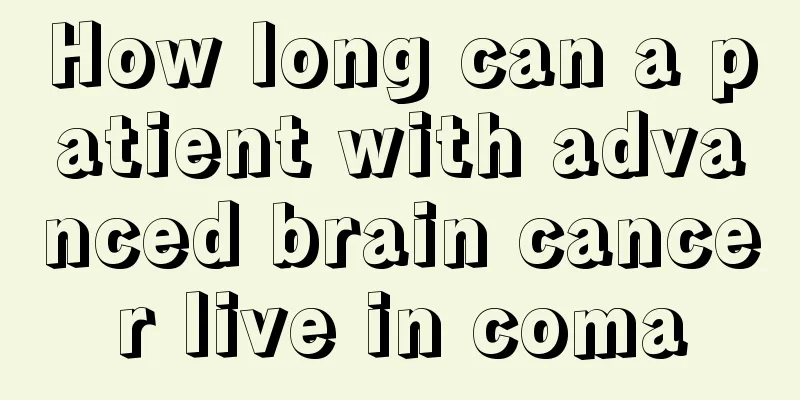Best treatment for breast cancer

|
It is understood that the incidence of breast cancer has been increasing in recent years, and many women are panicking. If you are unfortunately diagnosed with this disease, you must go to relevant medical institutions for diagnosis and treatment in time. So, what are the treatments for breast cancer? In order to help everyone understand this aspect, let's learn about it together. 1. Surgical treatment Surgery is still one of the main treatments for breast cancer. There are many surgical procedures, and there is no consensus on their selection. The general trend is to minimize surgical damage and try to preserve the breast shape for early breast cancer patients as much as possible when equipment conditions permit. No matter which surgical procedure is chosen, the principle of radical cure as the main method and preservation of function and appearance as the auxiliary method must be strictly followed. 2. Radiation therapy Radiotherapy is a major component of breast cancer treatment and one of the local treatment methods. Compared with surgical treatment, it is less restricted by factors such as anatomy and patient constitution. However, the effect of radiotherapy is affected by the biological effects of radiation. It is difficult to achieve the goal of "completely killing" the tumor with the currently commonly used radiotherapy facilities, and the effect is inferior to surgery. Therefore, most scholars currently do not advocate simple radiotherapy for curable breast cancer. Radiotherapy is mostly used for comprehensive treatment, including adjuvant treatment before or after radical surgery, and palliative treatment of advanced breast cancer. In the past 10 years, the comprehensive treatment of earlier breast cancer with local resection as the main method has become increasingly common, and the efficacy is no different from radical surgery. Radiotherapy has played an important role in reducing the scope of surgery. There is a clear relationship between hormone receptor determination and the efficacy of breast cancer treatment: 1. The effective rate of endocrine therapy for estrogen receptor-positive patients is 50% to 60%, while the effective rate for negative patients is less than 10%. Measuring progesterone receptors at the same time can more accurately estimate the effect of endocrine therapy. The effective rate for patients with both positive progesterone receptors can reach more than 77%. The relationship between the receptor content and the efficacy is positively correlated. The higher the content, the better the treatment effect. 2. Receptor-negative cells are often poorly differentiated. Receptor-negative patients are prone to relapse after surgery. Regardless of whether there is lymph node metastasis, the prognosis of receptor-negative patients is worse than that of receptor-positive patients. If positive patients relapse, they tend to metastasize to the skin, soft tissue or bones, while negative patients tend to metastasize to the viscera. 3. The determination of hormone receptors is currently used to formulate postoperative adjuvant treatment plans. For receptor-positive patients, especially postmenopausal cases, endocrine therapy can be used as postoperative adjuvant treatment, while for premenopausal or hormone receptor-negative patients, adjuvant chemotherapy is the main treatment. 3. Endocrine therapy Endocrine therapy for breast cancer is not curative, but it can achieve varying degrees of palliative effect for hormone-dependent breast cancer. The more estrogen receptors (ER) there are in the cytoplasm and nucleus of cancer cells, the stronger their hormone dependence is. And it should be remembered that breast cancer that occurs before menopause is different from breast cancer that occurs after menopause in treatment. Principles of adjuvant chemotherapy Most breast cancers are systemic diseases, which has been confirmed by numerous experimental studies and clinical observations. When breast cancer develops to a size larger than 1 cm and a mass can be palpated clinically, it is often a systemic disease. There may be distant micro-metastases, but they cannot be found with current examination methods. The purpose of surgical treatment is to achieve maximum local control of the primary tumor and regional lymph nodes, reduce local recurrence, and improve survival rate. However, residual tumor cells still exist in the body after tumor resection. Based on the concept that breast cancer is already a systemic disease when diagnosed, the purpose of systemic chemotherapy is to eradicate the residual tumor cells in the body to improve the cure rate of surgery. The above treatment methods are for reference only. There are many ways to treat the disease. I hope that breast cancer patients can choose the treatment according to their actual situation and not generalize. For your health, it is recommended that you choose a regular hospital and choose the correct treatment before treatment to avoid all unnecessary troubles. |
<<: What are the diagnostic methods for breast cancer
>>: Traditional Chinese medicine treatment for stage 3 breast cancer
Recommend
What should liver cancer patients pay attention to in their diet? Liver cancer patients should pay attention to these points in their diet
What are the dietary requirements for liver cance...
What are the treatments for Sjögren's syndrome?
Sjögren's syndrome is a precursor to rheumati...
How to make eyelashes grow longer?
If the eyelashes are longer, the eyes will look p...
How to diagnose the recurrence of lung cancer? Introduction to diagnostic methods for lung cancer patients
An important task after surgical treatment of lun...
What are the adverse consequences of hyaluronic acid dissolving enzyme
Hyaluronic acid dissolving enzyme is actually an ...
Physiological functions of fat
Everyone has a lot of fat in their body, especial...
Does a humidifier work?
The quality of life of modern people is getting h...
Family members suffer from colorectal cancer due to poor diet
Colorectal cancer is the fastest-growing cancer i...
What medicine is effective for Yin deficiency and hyperactivity of fire
If you often feel weak, have oral ulcers, back pa...
Can folliculitis be cured?
Many small red spots will appear on the skin, and...
What are the dangers of washing underwear in a washing machine
Underwear is very private and close-fitting cloth...
Exercising for two hours a day can increase the survival rate of cancer patients by 56%
A foreign study shows that if aerobic exercise is...
How to care for advanced liver cancer? Introduction to advanced liver cancer care methods
When it comes to liver cancer, many people think ...
How is prostate cancer classified
In recent years, prostate cancer has become one o...
How to brew Fuzhuan tea
China has a long tea drinking culture, and there ...









